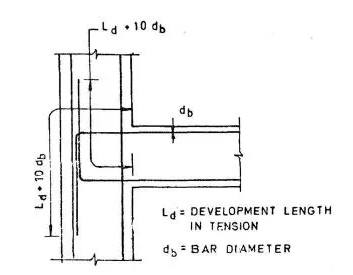Bituminous materials or asphalts are much used for
roadway construction, at first because of their excellent binding
characteristics, water proofing properties and relatively low cost than other
binding material. Bituminous materials consists of bitumen which is a black or
dark in colour solid or viscous cementations substances consists chiefly high
molecular weight hydrocarbons derived from distillation of petroleum or natural
asphalt, has adhesive properties, and is soluble in carbon disulphide. Tars are
residues from the destructive distillation of organic substances such as coal,
wood, or petroleum and are temperature sensitive than bitumen. Bitumen will be
dissolved in petroleum oils where unlike tar.
- Bitumen
oxidizes slowly,
- Most
bitumen are colloidal in nature,
- Bitumen
are insoluble in water,
- Bitumen
are thermoplastics,
- They
have no specific melting, boiling or freezing point,
- They
are highly impermeable to the passage of water,
- They
are generally hydrophobic,
- They
are chemically inert.
Why bitumen is used?
Because of
these properties bitumen is used for roadways construction as paving material
Properties
of Bitumen and Bituminous Materials
Following
are the properties of Bitumen
- Adhesion
- Resistance to Water
- Hardness
- Viscosity and Flow
- Softening Point
- Ductility
- Specific Gravity
- Durability
- Versatility
- Economical
- Strength
1. Adhesion:
This property of bitumen cans
bines all the components together without changing any properties of their road
material. Bitumen has the ability to adhere to a solid surface in a fluid state
depending on the nature of the surface. The water presence on the surface will
prevent adhesion.
2. Resistance
to Water:
We all know that bitumen is
insoluble in water and can serve as effective sealant bitumen is water
resistant capacity. Under some conditions water may be absorbed by minute
quantities of inorganic salts in the bitumen or filler in it.
3. Hardness:
The hardness of bitumen can be
measure by the penetration test which is measures the depth of penetration in
tenths of m, the weighted needle is penetrate in bitumen after a given time, at
a known temperature maintained in bitumen.
The bitumen grades measure by
penetration, if penetrations greater than 40 than that type of bitumen mostly
used in road construction and occasionally in industrial applications. If the
penetrations less than 40 than that type of bitumen used exclusively in
industrial applications. At hot climate lower grades bitumen is used.
4. Viscosity
and Flow:
Bitumen are thermoplastic, viscoelastic materials, which
behavior depends on temperature, speed and size of the load. Viscoelastic
character means that by impact of external forces partially elastic deformation
occurs (elastic component) and partially plastic strain occurs (viscosity
component). At low temperatures, respectively, at high frequencies of load
(fast passing cars), the bitumen behave as an elastic and solid material. The
elastic unit is deformed under load and after reducing the load, it is returned
to the original shape. This behavior, however, lasts continues as long as exceeding the limits of bearing capacity and materials damage, it means the bitumen binders
crack. At high temperatures, respectively, during long-term loading (parking
vehicles), the bitumen behaves as a viscous material. Resultantly,
decrease in adhesive and flow properties and an increase in the softening point
temperature and coefficient of thermal expansion.
5. Softening
point:
Bitumen with lower softening point tends to
melt on the road in summer and start flowing under the impact of temperature
and traffic. Therefore it can be concluded that bitumen’s with higher softening
point melt at higher temperature and having better rutting resistance. This
property make us to know whether given bitumen can be used at the particular
place i.e. softening point value should be higher than pavement temperature
otherwise bitumen present in the layer get soften and come out. These Properties
of material can be tested in lab.
6. Ductility:
Bitumen is a highly ductile
material, we can change the bitumen at solid and liquid state easily, Ductility
test is conducted to determine the amount bitumen will stretch at temperature
below its softening point. A briquette having a cross sectional area of 1 in2 is
placed in a tester at 77 °F. Ductility values ranges from 0 to over 150
depending on the type of bitumen. If bitumen is more ductile than it is very
easy to form or formation of the film and coating would be proper.
7. Specific
Gravity
Specific gravity of a binder does
not influence its behaviour . But all the same, its value is needed in
mix design. The property is determined at 27º C.
8. Durability:
Bitumen durability refers to the long-term resistance to
oxidative hardening of the Material in the field. Although, in-service, all
bitumen harden with time through reaction. With oxygen in the air, excessive
rates of hardening (poor durability) can lead to premature binder embrittlement
and surfacing failure resulting in cracking and chip loss. Bitumen lives upto
twenty years if maintained properly throughout the pavement life.
9. Versatility:
Bitumen have versatile properties due to versatility
properties of Bitumen it is relatively easy to use it in many applications
because of its thermoplastic property. It can be spread easily along the
underlying pavement layers as it liquefies when heated making the job easier
and hardens in a solid mass when cooled.
10. Economical:
At road construction bitumen is used as a main road
construction material because it is available in cheaper rates as compare to
another binder material almost all over the world which makes it feasible and
affordable in many applications.
11. Strength:
Though the coarse aggregates are the main load bearing
component in a pavement, bitumen or asphalt also play a vital role in distributing
the traffic loads to the layers beneath.





0 Comments